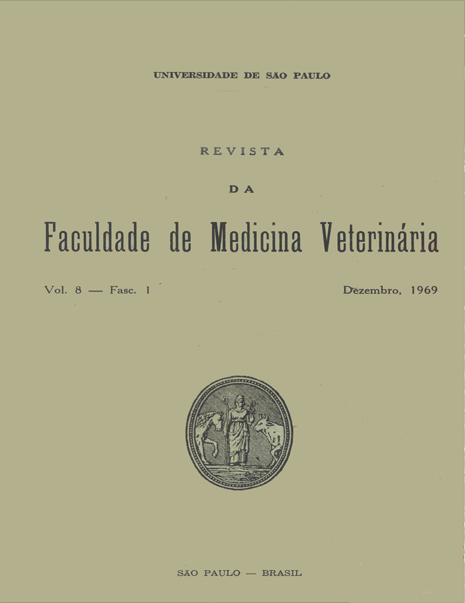Survey on the chemical composition in pasture plants produced in restricted areas of São Paulo, Brazil
DOI:
https://doi.org/10.11606/issn.2318-5066.v8i1p159-175Keywords:
The article has no keywords.Abstract
A study was conducted in order to determine the chemical composition of pasture plants — Colonião (Panicum maximum), Jaraguá [Hyparrhenia rufa (Nees) Stapf] and Gordura (Melinis minutiflora), largely spread in areas of São Paulo State, Brazil. The samples were collected in various counties, according with four types of soil, in dry (July) and wet (January) seasons. The results showed that the highest crude protein contents were obtained in Panicum maximum (Colonião) that differed, significantly in relation to Hyparrhenia rufa (Nees) Stapf (Jaraguá) and Melinis minutiflora (Gordura or Molasses grass). However, the three grasses showed a higher increase of this component during damp season. In relation to the crude fiber, the forages — Hyparrhenia rufa (Nees) Stapf and Melinis minutiflora — had lower amounts of it as compared to the Panicum maximum but, in dry season, the three pasture plants presented higher levels of this nutrient. On the other hand, the fat (ether extract) contents showed no differences between seasons, but the Molasses grass (Melinis minutiflora) exhibited higher richness of it whose average differed, significantly in confront with the Hyparrhenia rufa (Nees) Stapf and Panicum maximum. There was a decided difference in the amount of ash as the highest values were atributed to the Panicum maximum and Hyparrhenia rufa (Nees) Stapf but the three pasture plants revealed lower contents of it, in dry season. Concerning to the nitrogen-free extract, it was concluded that any effect due to differences in seasonal conditions could be neglected. However the Panicum maximum showed reduced content of this nutrient related to a general increase of the other components in it. Finally, the gross energy, expressed in kilocalories per gram on dry matter basis, showed higher values, in dry season. The figures 1 to 6, allow an overall comparison of the three pasture plants in their nutrient contents and, the results, according with the types of soil, seasons and the various counties where the grasses were harvested, are set out in tables I, II and III.


